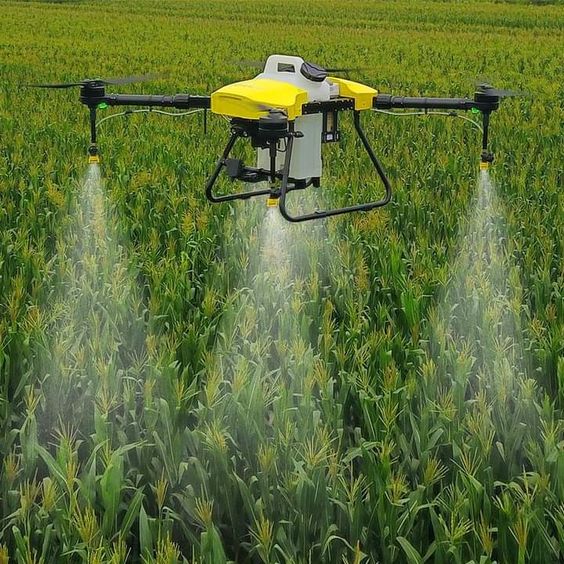Harnessing Technology: How Agricultural Environmental Monitoring Systems Empower Smart Agriculture
Agricultural Environmental Monitoring In a world facing growing populations and a changing climate, the agricultural sector is under immense pressure to adapt and innovate. Smart agriculture, embracing digital technologies to optimize farm operations, has emerged as a crucial solution. Within this landscape, agricultural environmental monitoring systems (AEMS) play a pivotal role by providing real-time data and insights, empowering farmers to make informed decisions and achieve sustainable agricultural practices.
Contents
The Need for AEMS:
Agricultural Environmental Monitoring,Traditional farming methods often rely on intuition and experience, leaving room for uncertainties and inefficiencies. AEMS bridge this gap by offering data-driven insights into various aspects of the agricultural environment:
-
Climate: Air temperature, humidity, rainfall, wind speed, and solar radiation are crucial for crop growth and pest control. AEMS provide real-time and historical data on these parameters, allowing farmers to optimize irrigation practices, predict weather events, and implement disease and pest management strategies.
-
Soil: Monitoring soil moisture, temperature, pH level, and nutrient content allows for targeted fertilizer and water applications. This not only optimizes resource use but also improves soil health and crop quality.
-
Water: AEMS can monitor water usage, detect leaks in irrigation systems, and optimize water flow, leading to significant water conservation efforts. This is especially pertinent in regions facing water scarcity.
Components of an AEMS Agricultural Environmental Monitoring:
A typical AEMS comprises several key components:
-
Sensors: These are deployed across the farm to collect various environmental data points continuously. Sensors can be ground-based, measuring soil parameters, or atmospheric, monitoring air quality and weather conditions.
-
Data Acquisition Systems: These systems collect and process data from various sensors, ensuring reliable and accurate information. They may involve gateways or data loggers that transmit data to a central platform.
-
Communication Network: Wireless technologies like Wi-Fi, cellular networks, or Low-Power Wide-Area Networks (LPWAN) enable seamless data transmission from sensors to the central platform.
-
Data Processing and Analytics Platform: This platform stores, analyzes, and visualizes the collected data. It may use cloud-based solutions or on-farm servers, offering farmers insights and actionable recommendations.
Benefits of Agricultural Environmental Monitoring AEMS:
Agricultural Environmental Monitoring,Implementing an AEMS offers a multitude of benefits for farmers:
-
Increased Crop Yields: By providing real-time data on crucial environmental parameters, AEMS enable farmers to optimize resource usage, leading to improved crop growth and higher yields.
-
Reduced Costs: AEMS can help farmers save on water, fertilizers, and pesticides by prompting targeted applications based on actual needs. This can significantly reduce operational costs.
-
Improved Resource Management: AEMS provide insights into water usage and soil health, empowering farmers to implement sustainable practices and conserve resources.
-
Enhanced decision-making: AEMS offer data-driven insights that can inform decisions related to irrigation scheduling, fertilizer application, pest control, and harvesting, leading to improved overall farm management.
-
Early Detection of Issues: AEMS can help detect potential issues like pest outbreaks, soil nutrient deficiencies, or extreme weather events at early stages, allowing farmers to take timely and effective measures to minimize damage.
Considerations for Implementing AEMS:
While AEMS offer significant benefits, it’s crucial to consider the following factors for successful implementation:
-
Cost: The cost of sensors, data platforms, and maintenance needs to be carefully evaluated and weighed against the anticipated benefits for the specific farm size and operations.
-
Technical Expertise: Operating and interpreting data from AEMS may require some level of technical expertise. Training and support from vendors or agricultural extension services can be crucial for smooth implementation.
-
Connectivity: Reliable internet connectivity is essential for data transmission and access to the AEMS platform. This may be a challenge in remote areas with limited access to internet infrastructure.
Conclusion:
Agricultural environmental monitoring systems are powerful tools for empowering smart agriculture. By providing real-time data and insights into the farm environment, AEMS enable farmers to make data-driven decisions, improve efficiency, optimize resource use, and build sustainable agricultural practices. As technology continues to evolve and become more affordable, AEMS are poised to play an increasingly vital role in transforming the agricultural sector and ensuring a more resilient and productive future.




